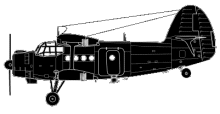Incident Overview

Description
The pilot and copilot were hired to relocate the radial engine-equipped biplane as a public flight. The pilot stated that, while enroute, the airplane began to smoke and the engine lost power. The pilot performed a forced landing to a levee; however, the airplane’s main landing gear were wider than the levee, and after touchdown, the airplane traveled off the left side, nosed over, and came to rest inverted, resulting in substantial damage. Postaccident examination of the airplane revealed that the engine oil system used an oil cooler, which was mounted under the airplane’s fuselage and was surrounded by a tunnel with electrically-controlled shutters that could be opened to increase airflow through the oil cooler or closed to decrease airflow through the oil cooler. The shutters were found in the closed position. The engine cowling was also equipped with cowl flaps, which were found in the closed position, and examination of videos of the airplane indicated that the cowl flaps were closed during both the engine runup and takeoff on the accident flight. Metal contamination was discovered inside the main engine oil filter, oil pump filter, and two other oil strainers, which were indications that the engine had incurred some internal damage before the loss of power. The airplane’s cockpit instruments and switches were labeled in Cyrillic script. During a postaccident interview, the pilot stated that he only had partial excerpts of a flight manual for the accident airplane that was in Spanish, so his copilot had to translate what the labeling in the cockpit said. The manual also listed reference airspeeds in miles per hour, though the airplane was marked in kilometers per hour. The oil cooler and cowl flap position switches were located next to each other, on the aft right upper surface of the ?central control desk.’ Both switches were found in the off position after the accident. Although the airplane was equipped with a cylinder head temperature (CHT) gauge, the pilot stated that this gauge was inoperative, which he noticed during the first of three runups that he performed in the days leading up to the accident flight. The pilot (who was also an airframe and powerplant mechanic with an inspection authorization) advised that he had traveled to the airport on three occasions before the accident flight. On each occasion (including the day of the accident flight) he had performed a preflight inspection and engine runup. He did not use a checklist during any of the preflight inspections. When asked if he had the cowl flaps in the open position for the accident flight, he advised that he might have had them closed. When asked how they were operated, he could not remember. When asked about the oil cooler and where the switch was located to open and close the shutters, he did not remember anything about an oil cooler. Review of an English language version of the airplane flight manual revealed that it contained recommended parameters for engine operation that required opening and closing the oil cooler shutters and cowl flaps by referencing the temperatures presented on the CHT gauge. The outside air temperature around the time of the accident was about 82øF. In summary, the circumstances of the accident are consistent with the pilot’s failure to adequately familiarize himself with the airplane’s systems and their operation before the flight, which resulted in his operation of the airplane during the taxi, takeoff, and initial climb with the cowl flaps and oil cooler shutters closed. Additionally, his decision to fly the airplane with the inoperative CHT gauge resulted in his inability to monitor engine temperatures and likely led to the exceedance of the engine’s maximum CHT, which in turn resulted in the loss of engine power. Probable Cause: The pilot’s failure to properly configure the cowl flaps and oil cooler shutters, which resulted in a total loss of engine power due to overheating of the engine. Contributing to the accident was the pilot’s decision to operate the airplane in with an inoperative cylinder head temperature gauge.
Primary Cause
Failure to adequately configure cowl flaps and oil cooler shutters, coupled with the use of an inoperative cylinder head temperature gauge.Failure to adequately configure cowl flaps and oil cooler shutters, coupled with the use of an inoperative cylinder head temperature gauge.Share on:





